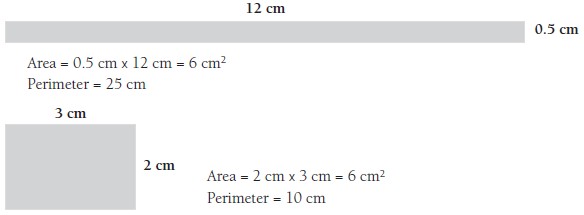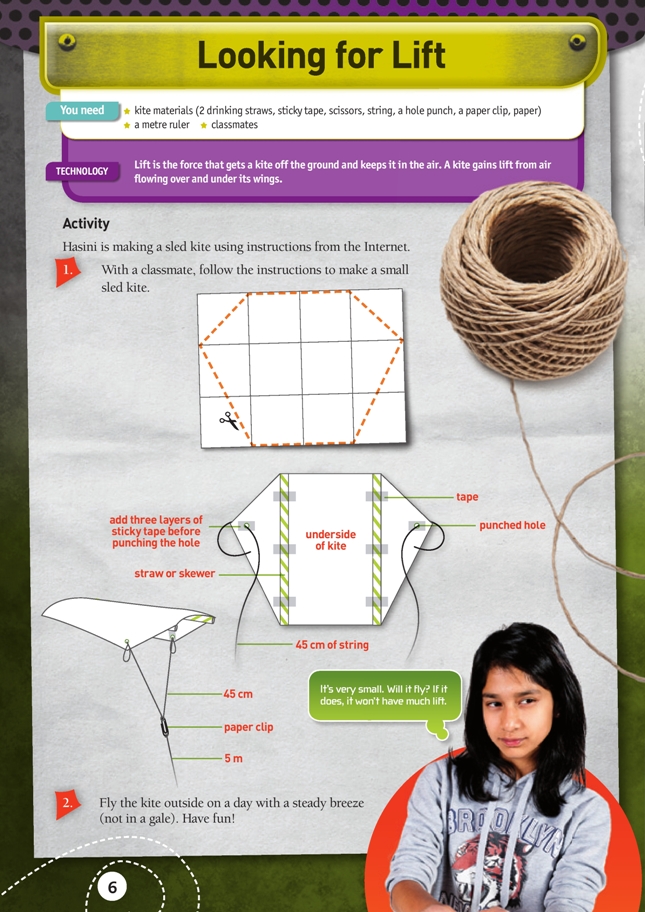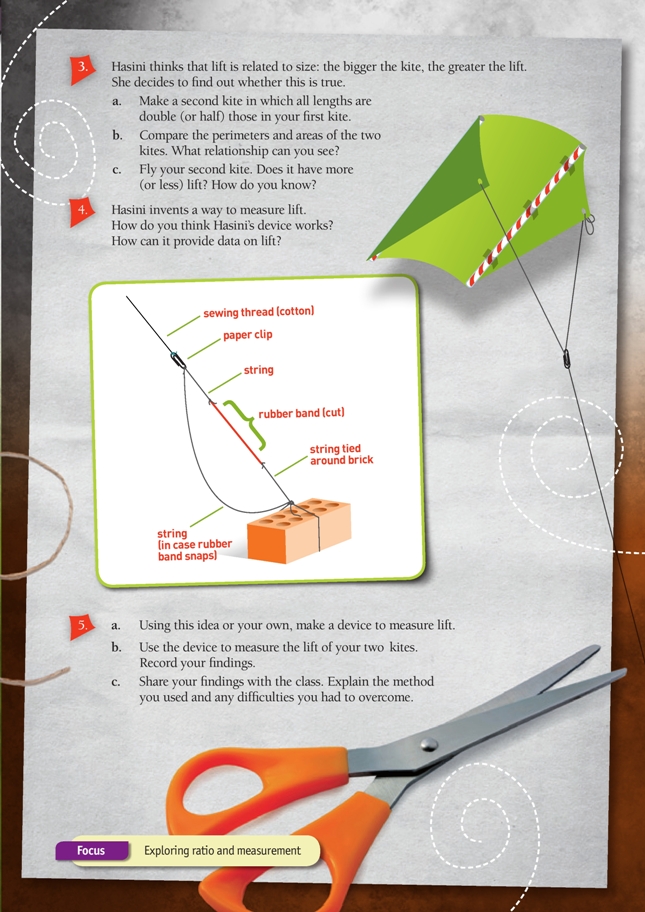This is a level 4 activity from the Figure It Out series.
A PDF of the student activity is included.
Click on the image to enlarge it. Click again to close. Download PDF (1806 KB)
While discrete objects (such as people in a room) can be counted, continuous variables (such as length, time, angle, volume, mass, and temperature) can only be quantified (that is, measured) with the aid of a suitable device and unit.
Measurement skills include being able to use devices (for example, a ruler, a jug, a protractor, a thermometer), read scales, estimate, choose appropriate units, interchange units, round, interpret a decimal point, and assess the sensibleness of a result.
Measurement is the basis of most quantifying and most comparing. Confidence in measuring is developed over time, through experiences in many different contexts. Ideally, students extend and develop their skills in response to a need. In these activities, they need a basis for comparing the lift of two kites.
kite materials (2 drinking straws, sticky tape, scissors, string, a hole punch, a paper clip, paper)
a metre ruler
classmates
FIO, Technology in Practice, Levels 3+-4+, Looking for Lift, pages 6 - 7
Intuitively, it makes sense that some connection exists between area and perimeter: a large shape should have a large perimeter, a small shape should have a small perimeter. If the length of each side in a shape is doubled, the perimeter will double, but the area will be four times larger. If each length is halved, the area of the resulting shape will be one-quarter that of the original. Note that this relationship only exists because the two shapes are geometrically similar.
Introduce question 3 by showing your students that the perimeter of two simple shapes with the same area can be quite different. For example, both of these rectangles have an area of 6 cm2 but they have different perimeters:
Kite flying requires a fine day with a steady breeze. In a good investigation, variables will be controlled, but there is no way to maintain a consistent wind speed. One way around this is to measure the lift of the two kites simultaneously. Another option is to create the wind artificially, for example, using a large fan.
If the students’ kites lack stability, attaching a tail (strip of paper) to the end of each straw may help.
In order to make a statistical comparison between the lift of two kites, students need to find a way to quantify lift. Aside from measurement of time, most of the students’ prior experience of measurement will have involved objects that they can see or hold. Hasini’s device can be used to compare the lift of two kites by measuring the length of the stretched rubber band.
Extension
Students could make and fly a small Eddy (diamond-shaped) kite or a miniature kite (see www.miniaturekiteguild.org). The latter are so small they fly at the end of just 2 or 3 metres of cotton line.
Flight, Book 17 of Building Science Concepts, provides ways for students to investigate how kites achieve lift. See also www.sciencelearn.org.nz/Contexts/Flight/Science-Ideas-and-Concepts/Wings-and-lift
Support for English Language Learners
Supporting students with topic- and subject-specific vocabulary
Introduce the topic by showing students pictures of kites from around the world, discussing their origin. Conduct a brainstorming activity with small groups recording words associated with kites on chart paper. Set an appropriate time limit.
When the allocated time is up, pair each group with another group. Groups read and discuss each other’s ideas.
Encourage students who know a first language other than English to contribute ideas in this language. If possible, allow these students to explore the topic of kites in their first language (through written or audio-visual material or through discussing it with someone who shares the same first language) before beginning this activity.
Review the charts as a whole class, noting key ideas and vocabulary.
The DVD Making Language and Learning Work 3: Integrating Language and Learning in Years 5 to 8 (Curriculum Focus, Year 7 Technology) includes an example of a class making lanterns and shows how the teacher incorporates support for language within a mainstream classroom lesson by using a similar strategy to the one described above.
Question 5 asks students to share their findings with the class. Some students, particularly English language learners, may need support and preparation time to take part. A speaking frame (similar to the writing frame on page 36 of these notes) is a useful tool.
Technology-related student activities
- Investigate customary Māori kites, including their purpose and the materials used to make them (see www.tki.org.nz/r/hpe/exploring_te_ao_kori/games/kite_e.php).
- Investigate the history of kites, including how they were used by the Wright brothers (see www.grc.nasa.gov/WWW/k-12/airplane/kite1.html).
Exploring the technology-related context
Testing a technological product is an important part of the design process. The Wright brothers used kites to test the performance of gliders because the forces operating on an aircraft flown as a kite are very similar to those operating on a glider. Modern engineers use models and wind tunnels to explore flight dynamics.
Answers to activity
1.–2. Practical activity
3. a. Practical activity
b. If the perimeter of the kite is twice that of the smaller kite, the area will be 4 times larger. If the perimeter is halved, the area will be one-quarter of the first kite’s area. However, this relationship is only true because the shape of the two kites is identical (one is an enlargement of the other).
c. Practical activity
4. When the kite pulls on the string, the rubber band will stretch. By measuring the distance from the end of the paper clip to the brick, Hasini can compare the lift of different kites.
5. a–c. Methods will vary.

